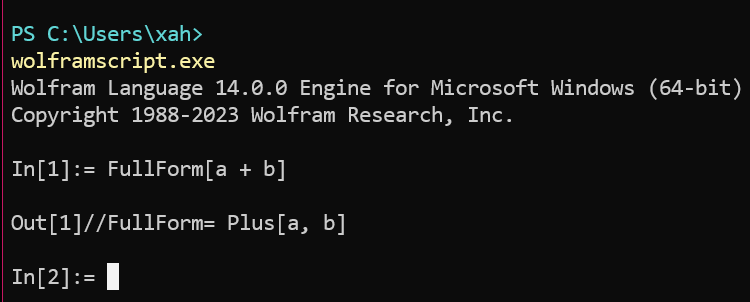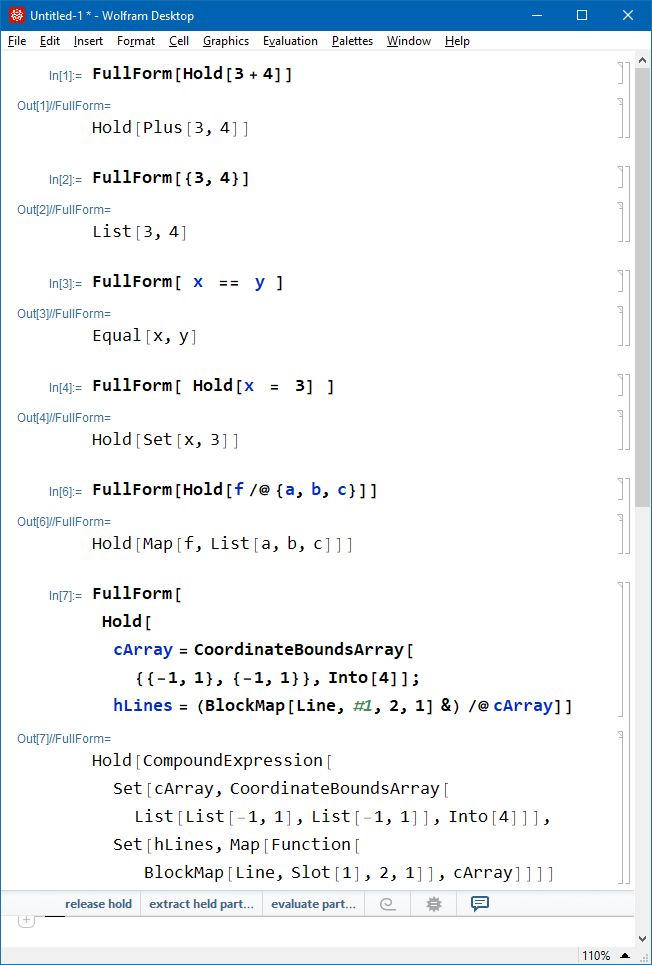Wolfram: FullForm Syntax
What is FullForm
WolframLang has a purely nested syntax, called FullForm, similar to lisp nested parenthesis.
FullForm syntax looks like this:
aa[]a[b]a[b, c, etc]
each of the head a, b, etc, can also be one of the above form.
this means, the following expressions with nested Head are also full form, but less commonly seen.
a[]a[][]a[b][c]a[b, c][d]a[b[c]][d]
Convert Expression to FullForm
You can type
FullForm[Hold[expr]]
to see the fully nested form of any WolframLang code.

